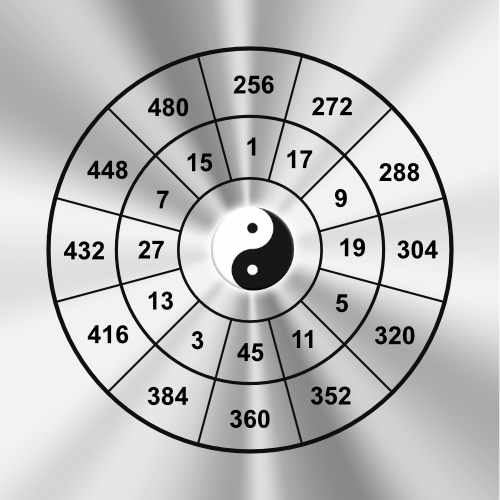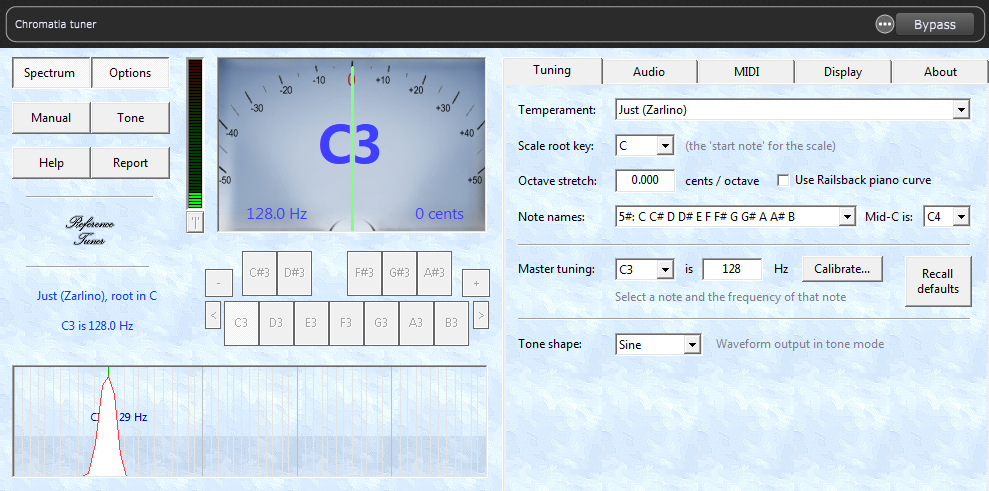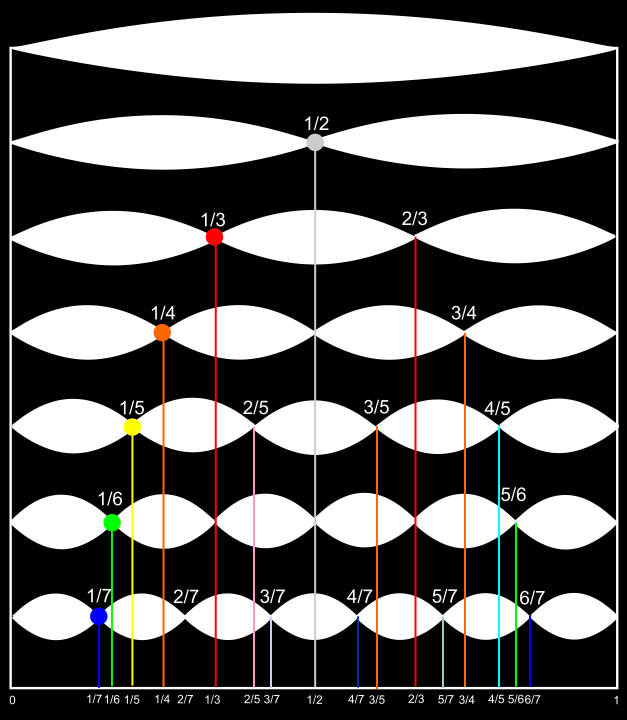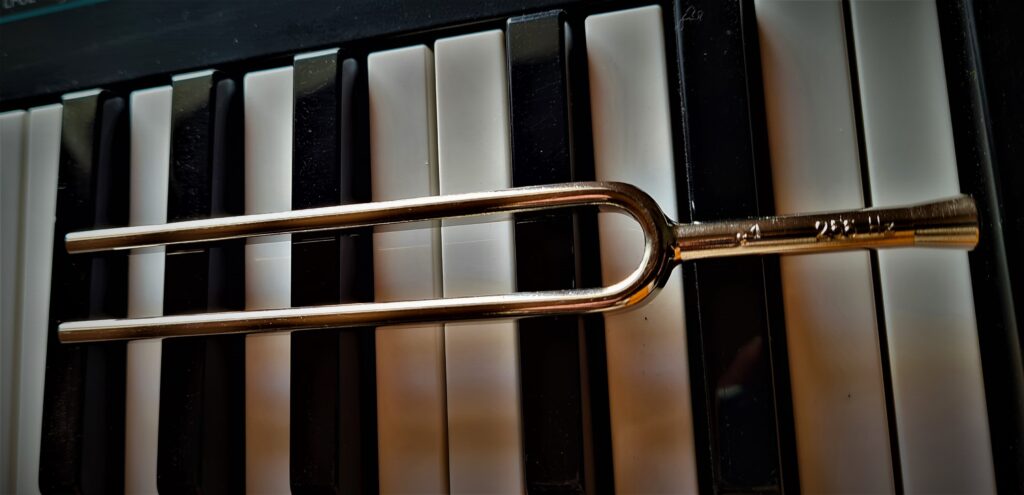Concert Pitch

C is always Prime
C IS ALWAYS PRIME
RUDOLF STEINER
Prim (from Latin primus – the first) is the root of a scale.
The C is the global base of all scales. This humanistic statement by Rudolf Steiner has now been proven with the universal frequency model Natural Tuning.

The tone was seen by Rudolf Steiner as an essential living thing.
“Neither sound, nor heat, nor light, nor electricity are vibrations, any more than a horse is a sum of galloping steps.
Sound, for example, is an entity Quale and the effect of this entity Quale in passing through the air is: the vibration.
For the feeling human being, the vibration is the reason to imitate the quale in himself;
this is the perception of the sound. It is similar with other things: light, etc.
Source: About the nature of some basic scientific concepts
, answering questions from 1919 (GA 320 –
appendix)
“ But the musical aspect is capable of presenting
this Christ impulse to the world in tones, in formed tones, in tones filled with soul, in tones spiritually infused.“
Source: Volume GA 243 – page 234
C = 128 Hertz = Sun
“ As is well known, the second as a unit of time cannot be found in natural phenomena and is therefore regarded by science as an arbitrary quantity.
However, the C = 1 Hz belongs to the tone C = 128 Hz as the seventh sub
-octave. By definition, this requires one second of time for one oscillation. Although it is imperceptible to human ears – the lower limit of hearing is around 16 Hz – physical inaudibility does not rule out its effectiveness.
It follows that our time second is by no means an arbitrarily fixed unit.
As a time measure of a sub-octave of the tone C = 128 Hz, it is anchored in people like this tone itself and thus creates a real connection between people and music, insofar as both are integrated into the flow of time. One of the main characteristics of music is that it has no spatial form, but runs exclusively in time. „
About the future importance of the tone C, Rudolf Steiner said: „F has actually already been added to the five old tones d, e, g, a, h to a very high degree, but not yet the actual c. That really has to come in with all of its human emotional significance.“
( GA 283b, p.15 )
So his statement to K. Schlesinger – C equals 128 Hz equal to the sun – can be seen as a gift, through which he opened up access to this „actual C“ to western mankind.“
Maria Renold p.131 Of intervals, scales, tones and that Concert pitch c = 128 Hz
1 Hertz is the tone C
1 Hz is the tone C
1 Hz is one second 1
Hz is the natural reference frequency of healing music128 Hz and 432 Hz belong together.
128 Hz is the base frequency of 432 Hz.This is the all-determining knowledge since Rudolf Steiner’s statements: „C is always prime“ and „C = 128 hertz = sun“.
“Well, for those who really recognize, the sun is not the physical ball of gas that modern physics describes it as, but a sum of spiritual beings.
And the main spiritual beings who radiate the spiritual, so to speak, from the sun, how the sunlight shines physically or etherically, are all grouped around a certain being that we call an old Christian-pagan, Christian-Jewish We could also say naming as being able to designate the Michael being.
Michael works out of the sun.
And what the sun has to give to the world spiritually
can also be called what Michael and his family have to give to the world.”
Rudolf Steiner (Lit.: GA 243, p. 138f )
Concert Pitch C = 128 Hz
C=128 Hz is the standard pitch of universal music.
C=128Hz is the basis of the frequency model of the naturally pure tuning > Natural Tuning.
This mood system is mathematical – scientific, but can develop cosmic-spiritual dimensions for the learner. That depends on how far the explorer of frequencies wants to get involved in the universal truth.
The important thing is: you don’t have to. The music based on 1 Hz (128 Hz is an octave of 1 Hz, 256 Hz is an octave of 1 Hz) sounds sound even without any theoretical knowledge. It’s just a natural sound because it is based on the series of natural tones (overtones).
The „promise of salvation“ of 432 Hz is also redeemed in this intonation system, yes, even the Solfeggio frequencies can be explained.

Octaving
Understanding octaving is very important. The term concert pitch is often misleading. It’s actually irrelevant, it just describes a common tuning tone when tuning musical instruments to each other.
An octave means doubling a frequency.
If the reference frequency = 1 Hz = one oscillation per second, then the first octave has 2 x 1 = 2 Hz, the second 2 x 2 = 4 Hz, the third 2 x 4 = 8 Hz, the fourth 2 x 8 = 16 Hz, the fifth 2 x 16 Hz = 32 Hz, the sixth 2 x 32 = 64 Hz, the seventh 2 x 64 = 128 Hz and the eighth octave 2 x 128 = 256 Hz.
Octave series :
0-1-2-4-8-16-32-64-128-256-512-1024-2048-4096-8192-16384-32768 …..
All octaves of a reference frequency are THE SAME TONE.
Maria Renold
Anyone who deals with 128 HZ will very quickly come across Maria Renold. Her book „Of Intervals, Scales, Tones and the Concert Pitch C = 128 Hertz“ is, so to speak, the bible of the 432 Hz and 128 Hz community. First and foremost, she deserves the thanks of frequency research.
Her book was published in German in 1985 and has become a modern classic of musical research.
Karl von Beitz writes in the foreword:
” Even in antiquity, they sought to constantly redesign their tonal laws and harmonious relationships. Not only because of the daily music-making, but because she wanted to find and organize the destinies of mankind in the tones. And the right tones should harmonize with the whole cosmos, the planets and the zodiac.
In our time of hearing, we feel differently. Raising this to full consciousness is a much attempted endeavour.
Only in listening, which alone must count as a „real“ standard for us; then in precise clarification by calculating what has been heard. In such work, Maria Renold gains the certainty of the distinctions, tests countless hearing people, does not give up taking Rudolf Steiner’s statements seriously, interpreting them, harmonizing them with one another. ”
Maria Renold (1917–2003) spent her childhood in the USA, where her parents emigrated to found eurythmy therapy in New York. She studied eurythmy and later violin and viola and toured with the Bush Chamber Orchestra and the Bush String Quartet.
One of Renold’s heartfelt questions concerned the correct concert pitch. When she heard about Rudolf Steiner’s pitch suggestion of c = 128 Hz, she immediately put it into practice and experimented with it for many years in America and Europe.
She discovered a new method of tuning the piano that involves both the frequency C = 128 Hz and the frequency A = 432 Hz.
It was Maria Renold’s aim to find a tuning for the piano that is based on the concert pitch C = 128 HZ, but which also has the concert pitch A = 432 HZ and with which 12 major tones can be explored. She did an excellent job with the Maria Renold tuning .
The frequency model of the naturally pure intonation does not claim to be able to play 12 major keys with a single intonation. The Maria Renold tuning is ultimately a compromise, just like all other tuning systems.Natural tuning follows pure intonation.
In this tuning, the compromised detuning of some chords is absent here.
256 Hertz—Scientific Pitch
A precursor of the concert pitch c = 128 Hz is scientific pitch .
Joseph Sauveur (1653-1716) and later also Chladni (1756-1827) proposed a tuning based on C, in such a way that a frequency with an oscillation period of exactly one second represents a C and each additional tone C in each case be an integer factor of 2 (one octave) higher.
The middle C (c1 or c′), which is eight octaves (factor 28) higher than a C of 1 Hz (C6), would have a frequency of 256 Hz (octave of 128 Hz).
In the second half of the 19th century, this proposal found increasing support in German-speaking countries and was discussed scientifically in well-known publications.
Natural tone overtone series
The natural overtone series is the chord of partials that vibrate simultaneously when a natural tone is sounded.
With each vibration, faster vibrations occur above the fundamental frequency, which are superimposed. This is a universal behavior of nature, be it sound or any other type of vibration.
Strings vibrate harmoniously. This means that in addition to the fundamental vibration, the string also vibrates in integer subsections, i.e. over half the length, 1/3, 1/4, 1/5 etc. of the string length. These vibrations all occur at the same time and are superimposed to form the overall vibration.
The graph shows the fundamental at the top, and the overtones below.
Only 6 are shown here. But the series is infinite.

The universal frequency model of the naturally pure intonation of music is based on the natural tone overtone series. It is a non-man-made phenomenon like gravity, for example, gravitation, a natural universal truth, a law of nature.To the natural tone overtone series
128Hz – 256Hz Tuning Forks
128 Hz 256 Hz tuning forks are often used directly on the body. The effect consists in the resonance of the vibrations of the body cells and induces a feeling of relaxation and peace. The body is brought into contact with the natural basic vibration. In connection with meditation, a healing effect can occur.
A Google search for 128 Hz tuning forks will turn up millions of results.
